Your children’s first bank account is more than a place to collect change or watch an allowance grow through accruing interest. It’s an opportunity to learn valuable life lessons.
When you give your children the gift of financial literacy – whether they’re six months, 11 years, or 16 years old – you’re giving them an essential skill for success. Learning to save early provides a head start toward a future of stability and opportunity.
Knowing how to save and how to spend money responsibly now can create a healthy and mature attitude toward money – and, in turn, a happier and less stressful life.
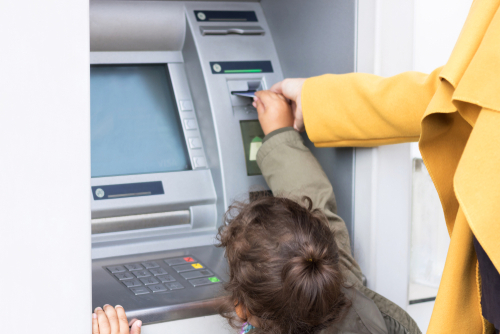
To truly give your kid the very best, you need to choose the right kid’s bank account. Yet the possibilities are enough to make a busy parent’s head spin.
There are so many types of bank accounts out there. Some accounts are geared specifically toward kids of a certain age group, others are general accounts for anyone. Then there are rates and charges to look at and a variety of possible features to compare.
To determine which is the best bank account for kids out there, we compared how the most popular and highly recommended children’s bank accounts on the market perform when it comes to the most important factors.
When you’re talking about banking and finance, part of the equation has to be the sheer numbers. Making the decision about the best savings account for kids starts with looking at these numbers and determining whether these are in line with your financial aspirations for your child.
Keep in mind that what may be the best bank account for kids may not be the best for teens – it’s all about meeting your unique needs in a bank account for each of your children. Interest rate is the first factor we looked at, because it plays such as crucial part in determining how much your child will gain through his or her savings account. Interest rates are variable, which means they can change over time, and in some accounts, they are tiered, which means that they vary depending on the balance of the account.
When choosing the best children’s savings accounts, the higher the interest rate, the better, because your money will grow more.
However, the interest rate isn’t everything. Another number you need to know is how much money you need to invest – either as an initial deposit to open the account or as a balance to maintain the account. While some of the best savings accounts for kids have no minimum balance requirement, others require $500, $1,000 or even more.
You should also understand what that minimum balance means. If you dip below that minimum amount, what happens? Will you be subject to fees, and if so, how much? A third financial factor we considered in our ranking is the amount and types of fees account holders face.
Even the best interest rate won’t help your child’s savings grow if the account gets hit by frequent and high fees. If your child’s bank charges a fee of just $5 per month to maintain the account, he or she is losing $60 per year – probably far more than the account is earning in interest.
Beyond the numbers, we looked at two important factors. One is the features offered by the children’s bank accounts. Some accounts reward children for reaching financial savings goals, and others, for achieving academic success.
There are banks on our list that teach financial concepts through engaging activities starring favorite children’s characters, make finance fun through offering free gifts to new youth savings account holders, or motivate children to save through setting goals and milestones.
Any features that educate or reward kids for saving, in financial ways or otherwise, make a kid’s bank account stand out as one of the best banks for children’s savings accounts.
Finally, access is a big part of how useful, and usable, a kid’s bank account is. We considered not just the convenience of online and mobile banking services and in-person branches and ATMs, but also much more. What aspects of the account do parents control, and what aspects do children control?
What obligations do you have as a parent in order to establish the account and keep it in good standing? Are there parental controls that allow you to monitor and limit your child’s use of the funds in the account?
The best bank for kids not only caters to the needs of parents and guardians who open bank accounts for their children and wards. It also offers kid-friendly services, such as a dedicated staff member and treats for children during special occasions (e.g., birthdays and Christmas).
Keep in mind that, in the end, children learn more about good spending and saving habits through tangible motivation.
Check out our “Things to Consider” Section!
- CAN I SET UP A BANK ACCOUNT FOR A CHILD?
- WHAT SHOULD I LOOK FOR IN A CHILDREN’S BANK ACCOUNT?
- WHAT KIND OF ACCOUNT SHOULD I OPEN FOR MY CHILD?
- WHY ARE CHILDREN’S BANK ACCOUNTS GOOD?
- HOW DO I GET MY CHILD INTERESTED IN GROWING THEIR SAVINGS ACCOUNT?
- SHOULD MY CHILD HAVE A DEBIT CARD?
- AT WHAT AGE SHOULD I OPEN A SAVINGS ACCOUNT FOR MY CHILD?
Every bank account on our list offers something special that makes it an excellent choice for your child. Read on to find the best account for kids that meets your family’s needs.
1. Alliant Kids Savings Account
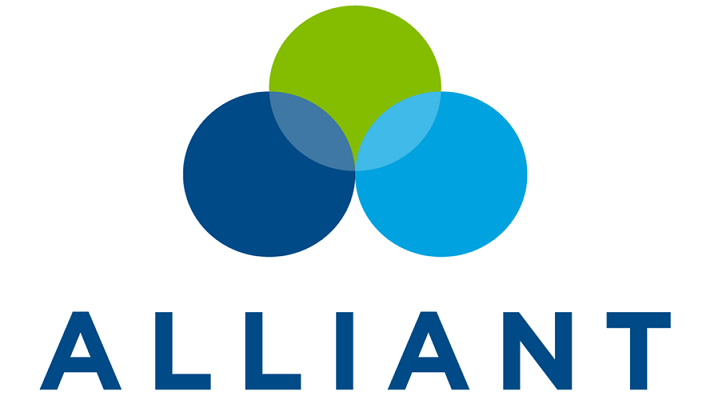
When it comes to kid-specific bank accounts, it’s tough to beat the features of Alliant Credit Union’s Kids Savings Accounts. With an interest rate to rival high-yield savings accounts for adults (more than 17.5 times the national average), you’re not sacrificing your son’s or daughter’s financial growth potential in exchange for great child-friendly benefits.
Especially impressive are the availability of supplemental accounts for savings goals and the focus on education about compound interest and how money grows.
Aside from the high-yield compound interest rate, other reasons that make it the best childrens bank account are easy mobile and online banking, ATM deposits, and easy withdrawal.
These are basic banking activities that children can learn under parental guidance and then perform on their own after a while. This encourages financial independence and critical thinking, too.
Although Alliant technically charges a $5 initial deposit, the credit union is willing to “pay” this initial deposit needed for kids 12 and under to open an account. Although membership in the credit union is required, there are numerous paths to membership.
If you don’t qualify for membership through employment, organizational membership, living or working in a qualifying community or being related to an Alliant member, you can become eligible by making a $5 donation to Alliant’s partner charity, Foster Care to Success (FC2S). The Alliant Credit Union kid’s savings account is ideal!
Pros and Cons
Pros
- Alliant covers the $5 deposit required to open an account, so there’s effectively no minimum balance to get started.
- No monthly fees as long as you agree to receive electronic statements.
- To learn how to work toward their savings goals, parents and kids can set up supplemental accounts for smaller goals, like bicycles, or for large goals like cars and college tuition. If you are asking can an 11 year old have a bank account… then the resounding answer is yes! In fact, this is the best youth bank account according to our evaluation.
- Accounts come with an Alliant Convenience Card, at no extra charge, so kids can make deposits via ATM.
- Once the account balance reaches $100, kids can watch the interest compound and see how it grows.
- Online and mobile banking options make it easy for parents and kids to see account balances and transfer money any time of the day, any day of the week. Parents can track account transactions through the mobile app.
- Like a savings account, your kid’s money is available when needed, not tied up for months or years.
- Specially developed for kids 12 and under, the account can later be linked to the child’s own Alliant Teen Checking Account, which they are eligible to apply for once they turn 13.
- Best bank to open savings account for child.
- Your child’s money is secure and federally insured up to $250,000 by the United States National Credit Union Administration (NCUA).
Cons
- If you want paper statements, you have to pay for them – $1 per monthly statement.
- The joint owner must be a parent, grandparent, or guardian who is a member of Alliant Credit Union.
Score
- Interest rate: 97/100
- Minimum balance: 100/100
- Bank fees: 90/100
- Features: 100/100
- Access: 95/100
Overall score: 96.4/100
2. Capital One Kids Savings Account
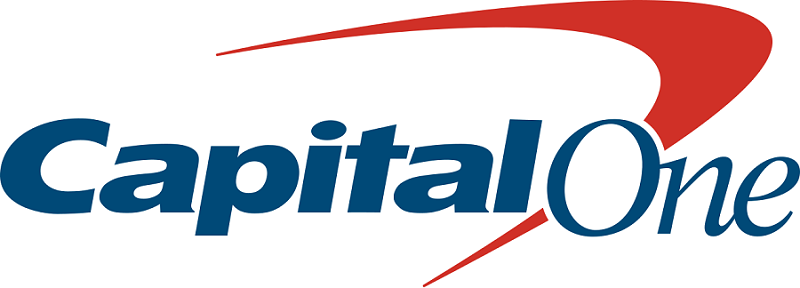
A close second is the Capital One Kids Savings Account, available for kids under age 18. While less stellar than Alliant’s, Capital One’s interest rate is still nearly 10 times the national average and one of the highest interest rates on our list.
Designed especially for kids, the Capital One kid’s savings account boasts several features you’re sure to love. Help your kid start planning their savings by setting up automatic savings plans and creating multiple accounts dedicated to every savings goal, from a video game console to their first car.
The convenient, user-friendly mobile app has great parent controls. With dual account access, your child will play an active role in his or her finances, but you still have control over any money transfers and withdrawals.
With no monthly fees, no maintenance fees and no minimum balance needed to open or preserve the account, there’s really nothing standing in the way of opening your Capital One child’s savings account. A few minutes is all you need to start your little one on a lifetime of financial literacy.
The Capital One kid debit card is also a notable feature with the teen checking account. Your teen can use the free debit card to withdraw money from more than 40,000 ATM machines – no fee for in-network transactions. But you still have parental control with features like alerts and card lock/unlock.
Pros and Cons
Pros
- No minimum deposit to get started and no minimum balance to keep the account open.
- No monthly or maintenance fees.
- To learn how to work toward their savings goals, parents and kids can set up supplemental accounts for smaller goals or for large goals.
- While kids can still make deposits the old-fashioned way by mailing a check or visiting the bank in person, they can also use mobile check deposit technology and online transfers for easy, fast deposits that are convenient for the whole family.
- Setting up savings goals gives children something to work for and the chance to see measurable progress – getting them excited about saving while providing a valuable, firsthand lesson in financial literacy.
- The option to create automatic savings plans and schedule hassle-free deposits mean contributing to your Capital One kid’s savings account is one less thing you need to worry about.
- Online and mobile banking options make it easy for parents and kids to see account balances any time of the day, any day of the week.
- Dual access means both kids and parents are active participants in the child’s banking. Only parents can authorize money transfers, so you never have to worry that your child will make a financial mistake that you won’t catch until it’s too late. Either the child or the adult can be named the primary account holder.
- Like a savings account, your kid’s money is available when needed, not tied up for months or years.
- No membership eligibility required.
- Your child’s money is secure and federally insured up to $250,000 by the Federal Deposit Insurance Corporation (FDIC).
Cons
- While higher than average, not the highest interest rate out there.
- Adult needs to authorize all transfers, which is great for account security purposes for younger children but could become a hassle for older children who work and are responsible for their own finances to some degree.
Score
- Interest rate: 87/100
- Minimum balance: 100/100
- Bank fees: 100/100
- Features: 90/100
- Access: 95/100
Overall score: 94.2/100
3. Alliant Teen Checking Account

A second Alliant account and one of the only spending accounts on our list, the Teen Checking Account is a great choice as the best youth bank account. More specifically, a checking account.
Once your 13- to 17-year old gets his or her first job, is paying for gasoline and car insurance, or is otherwise spending money on a semi-regular basis, this joint-ownership account is ideal for learning the right way to spend responsibly.
There’s no minimum balance or monthly fees and the account even pays interest (at a rate that exceeds many banks’ savings account interest rates, no less).
We consider it the best checking account for kids, specifically teens, because of its balance between robust parental controls and encouraging a sense of responsibility in teens.
Parents can use alerts, daily withdrawal and debit limits, and mobile banking to monitor their teens’ use of the checking account. Teens, on the other hand, can make cardless transactions through the mobile app.
This is a kid’s bank account with a debit card, as both the parent and the child receive a debit card, and kids also receive their first checks – with both names on them. As a parent, you have full access to view your child’s transactions – but don’t worry, the responsibility isn’t all on you.
Daily limits on debit card withdrawals and purchases will prevent your child from going on a spontaneous spending spree without requiring you to watch the account like a hawk every minute.
Pros and Cons
Pros
- There’s no minimum or maximum balance.
- No monthly maintenance fees.
- Accounts come with two Visa debit cards, at no extra charge, so both kids and parents can access the account via ATM.
- The account includes your child’s first checks – in both of your names – with no charge for the first box.
- Although you can use more than 80,000 fee-free ATMs to access the account, if your child does have to use out-of-network ATMs, Alliant offers up to $20 per month in ATM rebates.
- Online and mobile banking options make it easy for parents and kids to see account balances and transfer money any time of the day, any day of the week. Parents can track account transactions through the Alliant Mobile Banking App.
- Parents are the only ones permitted to authorize outgoing transfers of money from their accounts to the child’s checking account, so there’s no temptation for kids to help themselves to extra allowance money. Parents can also set up recurring transfers to kids’ accounts.
- The mobile app works with Apple Pay, Google Pay, Samsung Pay, and Venmo, so your child still has access to his or her money even if the debit card is at home – great for emergencies or for kids who are prone to misplacing things.
- Like a checking account, your kid’s money is available when needed, not tied up for months or years.
- If you want to be in-the-know about how your child is using the account but don’t have time to be signing in all the time, simply set up transaction alerts.
- The account imposes daily limits on both cash withdrawals ($100) and debit transactions ($300), so even if your teen is still learning about smart spending, the amount of damage he or she can do is limited. Since these limits are automatically set by the credit union, you don’t have to worry about enforcing the rules yourself.
- While your teenager is spending, he or she is also learning. The online and mobile banking platforms integrate personal financial management (PFM) app that breaks down for users where they are spending their money so they can make informed financial decisions.
- Alliant offers a free overdraft protection service, but users must opt in and have an eligible savings account to use it.
- Your child’s money is secure and federally insured up to $250,000 by the United States National Credit Union Administration (NCUA).
Cons
- Although the Teen Checking Account pays interest, there are stipulations. To be eligible for interest, you must choose to receive electronic statements and have a minimum of one electronic deposit per month, excluding transfers made between Alliant accounts.
- There is a non-sufficient fund fee of $25 if attempts are made to withdrawal or make purchases of more money than is available in the account.
- If you want paper statements, you have to pay for them – $1 per monthly statement.
- The joint owner must be a parent, grandparent or guardian who is a member of Alliant Credit Union. Different paths to membership include working for or participating in a qualified employer or organization, working or living in a qualifying community and supporting Alliant’s partner charity.
Score
- Interest rate: 76/100
- Minimum balance: 100/100
- Bank fees: 100/100
- Features: 90/100
- Access: 90/100
Overall score: 91.2/100
4. Salem Five Direct Gold Star Saver Account
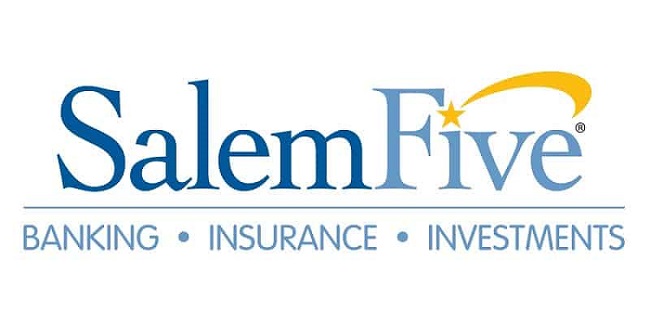
Although somewhat lacking in its interest rate, this account developed especially for kids under 18 deserves its own gold star for the child-friendly perks and education in financial literacy.
The Salem Five Direct’s Gold Star Saver Account caters to educating and motivating young savers, who are listed as the primary applicant for the account but own the account jointly with their parents.
In addition to requiring a low minimum opening deposit of just $10, the bank matches a child’s first $10 deposit and gives children a special gift upon opening the account. As the best children’s bank account, they will learn the value of a dollar and how to meet financial goals.
To keep kids inspired to save, Salem Five Direct recognizes their achievements of Savings Milestones. An ATM card that requires authorization allows children and parents the opportunity to work together to develop smart spending habits from a young age.
The bank also provides information for families on educating children from ages two to ages 16 and up on general financial concepts and personal financial habits, making this a great way to begin a toddler savings account.
We considered the educational aspect when choosing the best bank for children’s savings accounts, too, and Salem Five definitely meets the brief.
Pros and Cons
Pros
- The minimum balance to open the account is a reasonable $10 that won’t bust your family’s budget – and the bank matches that initial $10 deposit, so your child is already seeing growth from the get-go.
- Rewards like a special gift for opening the account and recognition each time your child reaches a savings milestone make saving money fun for even the younger kids.
- Accounts include an ATM card with authorization, making this the best checking account for kids. Learning to save and spend wisely is a journey you and your child embark on together, rather than an activity you manage solely on their behalf.
- No monthly or opening fees and a minimal $10 balance required to keep the account open.
- The Gold Star Saver Account is a jointly owned account, but since your child is the primary account holder, it will feel more personal to him or her.
- Educational ideas and tips help families and individual family members become more financially literate.
- No membership eligibility required, and the Direct online division of Salem Five mutual bank services accounts nationwide, rather than only in the regional area of Massachusetts.
- Online and mobile banking options make it easy for parents and kids to see account balances any time of the day, any day of the week.
- Online banking features include mobile check deposit, Popmoney for sending and receiving money online, and CardValet control and security assistance that allows you to temporarily turn off a misplaced debit card or set controls for its use.
- Like a savings account, your kid’s money is available when needed, not tied up for months or years.
- Your child’s money is secure and federally insured up to $250,000 by the Federal Deposit Insurance Corporation (FDIC).
Cons
- The below-average interest rate means families are choosing this option in spite of the account’s potential for earning interest. Families have to weigh if the bonuses, benefits, and lessons in financial literacy are worth the tradeoff of low-interest rates.
- There is a minimum deposit and minimum monthly balance required, though these amounts are low.
- You must agree to receive electronic statements as a condition of opening the account.
Score
- Interest rate: 40/100
- Minimum balance: 88/100
- Bank fees: 100/100
- Features: 100/100
- Access: 100/100
Overall score: 85.6/100
5. Bethpage Federal Credit Union Youth Savings Custodial (NYUTMA)
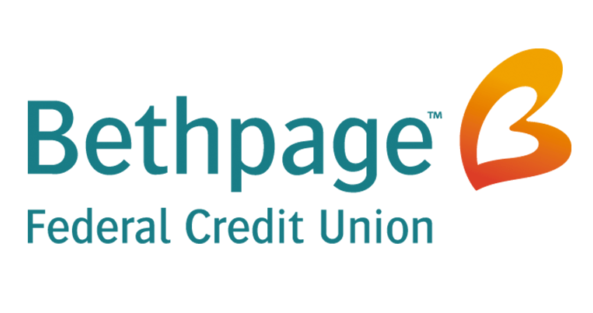
Although the interest rates offered through Bethpage Federal Credit Union’s Youth Savings Custodial Account are somewhat complicated, the credit union’s financial tutorials make it a great choice for teaching kids 17 and under about managing their finances.
If you would like to open a kid’s bank account, this account offers an extraordinarily high interest rate that’s more than 33 times the bank national average savings rate – but only on balances up to $1,000. Unfortunately, as soon as your child’s balance tops $1,000, the interest rate drops down to a considerably lower rate.
Although this shift may seem like a bait-and-switch tactic, even the lower interest rate is almost three times the average interest rate. With a low minimum balance requirement and a plan for the account to grow with your child through life stages, there are some definite advantages to choosing this credit union where all are eligible for memberships.
If financial education is one of your biggest concerns, check out the free interactive online tutorials available through the My Money 101 program. These fast-paced tutorials can be completed in just five to ten minutes on a desktop computer or mobile device on a schedule that fits your life.
Pros and Cons
Pros
- An unusually high interest rate on balances up to $1,000 with a decreased interest rate on balances over $1,000 will allow kids to grow their savings faster.
- The minimum balance to open the account is a reasonable $5 that won’t bust your family’s budget.
- This custodial account makes the minor the sole owner of the funds but the parent the controller of the account. You control deposits and access, although the credit union recommends reviewing the account together so your child can see how financial growth happens.
- The account grows with your child, automatically turning into a Young Adult Savings Account upon turning 18 and then a basic savings account at the age of 21.
- Bethpage Credit Union offers 16 different online tutorials on topics of general banking basics, loans, savings, taxes, insurance, and identity protection. Fast and easy to complete online and via a mobile device, these tutorials are available for free even to non-members.
- Online and mobile banking options make it easy for parents and kids to see account balances and transfer money any time of the day, any day of the week.
- For in-person banking, visit one of 5,000 shared branch locations or more than 30,000 ATMs across the United States.
- Although membership is required, eligibility is as easy as opening a $5 savings account.
- Like a savings account, your kid’s money is available when needed, not tied up for months or years.
- Your child’s money is secure and federally insured up to $250,000 by the United States National Credit Union Administration (NCUA).
Cons
- The phenomenal interest rate only applies to accounts with a balance under $1,000 before dropping down to a lower – but still competitive – rate. Some parents won’t like the principle of what feels like a bait-and-switch ploy.
- No special rewards for kids’ savings milestones, academic performance, or other accomplishments.
- As a custodial account, this account isn’t designed for joint or dual access that naturally facilitates children and parents learning together. Parents have more obligations and, if they want their child to be involved in the process, will have to intentionally find ways to include him or her.
Score
- Interest rate: 77/100
- Minimum balance: 95/100
- Bank fees: 85/100
- Features: 80/100
- Access: 90/100
Overall score: 85.4/100
6. USAA Youth Spending
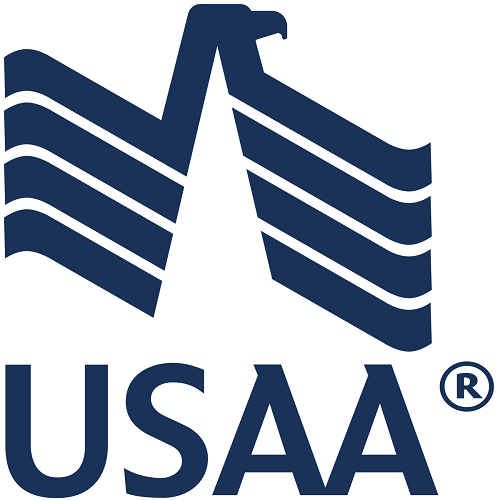
Like it or not, spending is part of life, and learning to spend wisely is a crucial component of planning your savings. USAA’s Youth Spending account is a checking account for kids under 18 that allows for parental controls and easy parental monitoring.
If your family qualifies for USAA membership through current or prior military service, this interest-bearing USAA youth account for checking is a great option for giving your maturing child some freedom to manage their own finances responsibly without allowing them to run wild.
Particularly impressive on the USAA kids account are the parental controls that allow you to customize access and limits on the account. Do you want to know about all transactions? How much money to you want your child to be able to access through cash withdrawal or debit purchases at a time? Do you want your child to be authorized to make deposits and transfers, or would you rather control this aspect of your child’s savings?
It’s all up to you – and that means you can make the choices that fit into your family values and dynamics or allow your child more autonomy as he or she matures. The USAA child debit card and USAA youth spending account are great options!
The USAA teen account is designed to encourage teens to manage their money, particularly as they’re starting to earn money in after-school and summer jobs. They can transfer money into their accounts at any time, too. Indeed, the features on a USAA youth account make it easier for teens to transition from being dependents to being financially independent!
Pros and Cons
Pros
- Although a checking account, balances over $1,000 will accrue some level of interest.
- No minimum balance.
- No monthly service fees.
- Accounts come with ATM debit cards that include zero liability for unauthorized transactions, so you don’t have to worry about what could happen if your child’s identity gets stolen.
- Extensive options for parental controls allow you to manage your child’s account in whatever way works best for your family. Parents can set up text alerts for information about account balance changes and spending. You can determine cash withdrawal and debit card limits that fits your child’s finances and level of maturity.
- In addition to transferring money into your kid’s account on your schedule, you get to decide whether or not your child is mature enough to make deposits or money transfers.
- Overdraft protection available.
- Free direct deposit.
- No-fee account access at more than 60,000 ATMs across the United States.
- Online and mobile banking options make it easy for parents and kids ages 13 and up to see account balances and transfer money any time of the day, any day of the week.
- Mobile app features include on-the-go account balance checks, an ATM finder and mobile check deposit.
- With a USAA teen account, once your child turns 18, the account automatically turns into a USAA Classic Checking Account, still with no fees and the free features young savers have grown up with.
- Like a checking account, your kid’s money is available when needed, not tied up for months or years.
- Your child’s money is secure and federally insured up to $250,000 by the Federal Deposit Insurance Corporation (FDIC).
Cons
- The interest rate is below the national average – but it’s worth noting that many no-minimum checking accounts don’t pay interest at all.
- Banking with USAA is membership-only. Membership is restricted to active and former military personnel (including Cadets and Midshipmen) and their families.
- The account doesn’t teach children financial literacy through savings goals, spending reviews, educational materials, or other learning methods, although you could certainly make a plan for providing that education along with establishing suitable parental controls.
Score
- Interest rate: 50/100
- Minimum balance: 100/100
- Bank fees: 100/100
- Features: 70/100
- Access: 100/100
Overall score: 84/100
7. PNC ‘S’ Is for Savings Account
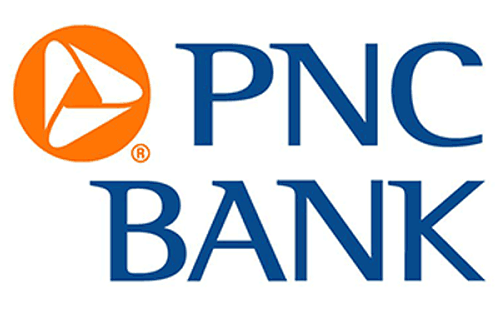
If you are wondering which bank has the best children’s account option, this PNC bank kids’ account has you covered. Education for little ones is the real strength of PNC Bank’s ‘S’ is for Savings account.
Interactive online banking experience with jars that represent saving, sharing, and spending puts money into perspective even a little guy or young girl can understand. Sesame Street characters star in activities meant to teach financial concepts, making this one of our selections for the best bank for kids… as they know how to speak to the children through cartoon characters.
Goal-setting features allow kids to set measurable and realistic goals and see their progress toward those goals in a way that makes saving fun and exciting. Auto Savings plans make it easy to make recurring deposits on your schedule.
The account is also fee-free for kids under 18 and begins earning interest – albeit, at a low rate – on the first dollar you deposit.
Pros and Cons
Pros
- The PNC bank youth account has no monthly fee for users under 18, with two ways to waive the $5 monthly service charge after turning 18.
- A reasonable $25 minimum deposit is all that’s required to open the account.
- Great educational tools include interactive online banking experiences, goal-setting features and learning activities featuring your child’s favorite characters from Sesame Street.
- No limits on deposits.
- Interest accrues on balances of $1.00 or more.
- Parents can schedule recurring transfers through Auto Savings.
- Only custodians can make deposits or withdrawals or otherwise access the account, so you know your child’s savings are safe – even from their own desires to splurge.
- No membership eligibility required.
- As a savings account, your kid’s money is available when needed, not tied up for months or years.
- Online and mobile banking options make it easy for parents and kids to see account balances and transfer money any time of the day, any day of the week.
- For in-person banking, visit one of 2,400 locations or more than 9,000 ATMs across the 21 states.
- Your child’s money is secure and federally insured up to $250,000 by the Federal Deposit Insurance Corporation (FDIC).
Cons
- The below-average interest rate means families are choosing this option in spite of the account’s potential for earning interest. Families have to weigh if the bonuses, benefits, and lessons in financial literacy are worth the tradeoff of low-interest rates.
- The minimum balance of $25 is somewhat higher than most of the accounts on our list, although still in the realm of affordability for most families.
- Because this is a custodial account, your child doesn’t have direct access to begin spending money responsibly – and within parental limits – on their own.
- After your child turns 18, the account will be subject to a monthly service fee of $5 unless it maintains a minimum balance of $300 or has at least one automatic transfer of at least $25 per month.
Score
- Interest rate: 30/100
- Minimum balance: 75/100
- Bank fees: 95/100
- Features: 100/100
- Access: 90/100
Overall score: 78/100
8. North American Savings Bank Stepping Stones Savings Account

We all like to be rewarded for making the right choices. The Stepping Stones Savings Account from North American Savings Bank rewards kids 18 and under for making additional deposits into their savings accounts – and that’s a great way to reinforce the message that it feels good to save.
With no minimum balance to keep the account open and no fees as long as the account is active and/or has at least $25, it’s easy to maintain this account throughout childhood and into the teenage years.
The account also affords your child access to NASB’s Financial Education Site, which is full of articles, calculators and other tools that help teach financial literacy to bankers of all ages. If you’re the type of parent who rewards your children for going beyond their savings goal, then you will likely consider NASB as the best bank to open savings account for child!
NASB rewards their young account holders when they make extra deposits, a smart way of motivating them to adopt smart saving habits.
Pros and Cons
Pros
- The interest rate is just above the bank national average savings rate. While the rate doesn’t exactly set this account apart, it’s a great compromise for families that don’t want to sacrifice actually growing their kid’s savings for financial education.
- Although a minimum deposit of $25 is needed to open the account, there’s no minimum balance to maintain it.
- There are no monthly fees unless the account balance drops below $25 and there’s no monetary activity for 12 months.
- The educational tools available from the bank’s Financial Education Site are perfect for teaching kids to be financially savvy from a young age.
- By rewarding kids for making extra deposits, the bank is promoting adopting smart savings strategies over splurging.
- No membership eligibility required.
- Online and mobile banking options make it easy for parents and kids to see account balances and transfer money any time of the day, any day of the week.
- The mobile app allows you to quickly and conveniently deposit checks via smartphone.
- Like a savings account, your kid’s money is available when needed, not tied up for months or years.
- Your child’s money is secure and federally insured up to $250,000 by the Federal Deposit Insurance Corporation (FDIC).
Cons
- Although very slightly above-average, the interest rate doesn’t compare to that offered by high-yield accounts.
- There is a minimum deposit of $25 to open the account, although that deposit is still in the realm of affordability for most families.
- Monthly fees can be charged on accounts if there is no activity and the balances slips below $25, but most families find that it’s easy to avoid the fee by making a small deposit or maintaining a $25 balance.
Score
- Interest rate: 55/100
- Minimum balance: 75/100
- Bank fees: 92/100
- Features: 84/100
- Access: 74/100
Overall score: 76/100
9. Marcus: By Goldman Sachs High-Yield CDs

If you’re all about the interest, consider the Marcus High-Yield Certificate of Deposit by Goldman Sachs for growing your child’s finances. Unlike the stock market, CDs are investments with a guaranteed return – but unlike traditional savings accounts that you can access anytime, CDs lock up your money for months or even years.
If that’s a tradeoff you can come to terms with – if, for example, you’re starting the account for a baby and don’t expect him or her to need access to the funds for quite some time – then the six-year Marcus CD will give you the best rates.
Based on the interest rate offered as of mid-2019, if you make only the minimum deposit of $500, you’ll grow your child’s money by $92 – nearly 20 percent – by the time the CD matures.
These CDs aren’t designed specifically for kids, so you won’t find fun educational activities and special child-friendly rewards, but for what it offers – growth potential – Marcus is a great option.
Pros and Cons
Pros
- The interest rate is more than 23 times the bank national average savings rate and two, three, or even five times the interest rate on CDs of the same length from top competing banks.
- There’s a guaranteed return on your investment that you wouldn’t find in other high-growth potential options like stock market investments.
- Although the longest terms typically offer the best interest rates, Marcus CDs are available in terms ranging from just six months to six years.
- A CD calculator allows you to figure out how much interest you could earn and compare your expected savings based on how much you plan to deposit and different term lengths at different interest rates.
- The 10-Day Rate Guarantee gives you 10 days to get the money in your account after you open it and ensures that you get the highest published interest rate that was offered during that timeframe. That means if rates go down in the 10 days after opening your account, you can keep the initial rate – but if rates go up during that time, you move up to the higher rate of interest.
- Your child’s money is secure and federally insured up to $250,000 by the Federal Deposit Insurance Corporation (FDIC).
- No membership eligibility required.
Cons
- A CD ties up your money until the date of maturity based on the term you selected, and you can no longer access it on demand without penalty. A CD is not a good choice if your child will be needing the money soon – if, for example, your teenager is approaching time to buy his or her first car or getting ready to go to college.
- Although the account grows your child’s savings, it doesn’t teach them financial literacy through savings goals, spending reviews, educational materials or other learning methods.
- With a minimum deposit of $500, you need more money to open this account.
- Unlike a savings account, you can’t keep adding to it throughout the term of the CD. Marcus allows you to continue adding to the CD for just 30 days after opening the account.
Score
- Interest rate: 100/100
- Minimum balance: 60/100
- Bank fees: 100/100
- Features: 75/100
- Access: 42/100
Overall score: 75.4/100
10. Justice Federal Credit Union Grow With Me Account

The Justice Federal Credit Union Grow With Me Account is an excellent choice for eligible kids under 18, especially those whose parents, grandparents or other loved ones are eager to make a financial investment in their future.
For one thing, although interest rates are variable, this account is virtually guaranteed to pay above-average interest rates. The variable rate is tied to the federal funds rate – promising to add 1 percent to that rate. The credit union awards a bonus introductory interest rate – 4.473 percent APY, as of mid-2019 – to boost kids’ savings even further during their first year, during which the account is treated as a certificate.
Despite the interest rates, parents shouldn’t rush out and open a Grow With Me Account for their child just yet. There are some strings attached to this account that make it more complicated than your average savings account. First of all, you need a minimum of $500 to set up the account, but putting in more than the minimum can be beneficial, even if it takes you longer to save up.
That’s because, although you can make an initial opening deposit of as much as $10,000, contributions to the account are limited to just $1,000 per year. The limited yearly contributions mean that, if you start out with a relatively low account balance, you can’t make up for it later by simply contributing more money after that initial balance.
Unlike most savings accounts, your child’s funds in this account aren’t liquid. Withdrawals can be penalized, and closing the account before your child turns 18 will forfeit all of the dividends earned. What can you do if you’re interested in the Grow With Me Account but you don’t have the $500 minimum deposit yet, or you want to save up more than the minimum before you open the account, or you simply want to keep some of the money accessible?
One option is to start by depositing as little as $5 to open a traditional Young Savers Account at the credit union, which allows for withdrawals, still has a relatively high interest rate, and is eligible for a Grow With Me Account later.
One other significant obstacle is eligibility for membership. Unlike Alliant, Justice Federal Credit Union doesn’t have an easy way to qualify for membership. You must either be involved in qualifying employers or organizations or be referred by an existing member of the credit union.
Pros and Cons
Pros
- Because the variable rate is 1 percent above the federal funds rate, even when rates change, this rate will continue to be highly competitive.
- In addition to parents making deposits, grandparents and other friends and relatives can also make deposits to the child’s account, up to a yearly maximum amount.
- No monthly maintenance fees.
- The savings account automatically converts to a Student Rewards Checking Account once your child turns 18.
- Option to create a regular Youth Savings Account through the credit union that allows for more flexibility in terms of minimum opening deposit, total contributions throughout the year and withdrawals prior to age 18 – either alongside the Grow With Me Account or prior to opening this special types of account.
- Your child’s money is secure and federally insured up to $250,000 by the United States National Credit Union Administration (NCUA).
Cons
- A relatively high minimum deposit of $500 is required to open the account.
- Subsequent deposits are limited to $1,000 per year.
- Your child can’t withdrawal from this account like he or she could from traditional savings accounts. Meant exclusively for saving, not spending, during their time as a minor, this account may penalize withdrawals.
- Although interest dividends are compounded and paid each month, closing the account before your turning 18 could cause your kid to forfeit all of that interest.
- Justice Federal Credit Union is membership-only. Membership is not open to the public and is restricted to those employed in the justice and law enforcement community and the family members and friends they refer to the credit union.
- Although the account grows your child’s savings, it doesn’t teach them financial literacy through savings goals, spending reviews, educational materials or other learning methods.
Score
- Interest rate: 99/100
- Minimum balance: 60/100
- Bank fees: 88/100
- Features: 79/100
- Access: 42/100
Overall score: 73.6/100
We want to take a close look at the Bank of America kids account – a runner-up on the list, if you will – since it has several good features, too. Parents and their children can choose from two types of bank accounts depending on their unique needs at the time.
First, the youth savings accounts have cheap maintenance fees, lower minimum balances and joint ownership and transfer ownership features. This means you and your child can open a savings accounts in both your names and when your child reaches a certain age, you can transfer its ownership to him or her.
Second, a custodial Bank of America child savings account is governed by laws including the Uniform Transfers to Minors Act or the Uniform Gift to Minors Act. Basically, the parent or guardian acts as a custodian of the funds and, as such, can deposit money and manage the account. However, the minor has legal ownership over the money and can withdraw it when he or she reaches 18 or 21 years old (age of majority) depending on where he or she lives.
Note: The custodial savings account has tax implications. On one hand, it has tax benefits in relation to interest income. On the other hand, gifts of more than $15,000 per year (as of 2018 rules) are subject to a gift tax.
Things to Consider
Can I set up a bank account for a child?
Yes, you can open kids bank account but be sure to read the new account guidelines.; however, as the parent, grandparent, or legal guardian, you will need to sign the paperwork as generally, children under the age of 18 cannot sign legal documents.
Most banks will allow your child’s name as the account holder; although, your name will be on it as well. The parent has access to it and total control if you wish. You can relinquish your restraints on the account to your child when they turn 18.
What should I look for in a children’s bank account?
Depending on your desires for your kid’s bank account, you may want to focus on current interest rates, as some are higher than others. However, if your child is just learning about the value of money and how to manage it, other kid’s features may be more important to you, at least for now.
For the younger little financial enthusiasts, check out our option number 7, PNC Bank’s ‘S’ is for Savings account, where Sesame Street Characters help your child bank their money! For the teens, check out option 3, the Alliant Teen Checking Account!
What kind of account should I open for my child?
Typically for the beginner, a simple savings account is the best. With this type of account, children can see their bank accounts grow, either through their own deposits or with interest. If your child receives birthday or holiday money each year, they can easily make a deposit to see their wealth expand.
As the child matures, opening a kid’s bank account with a debit card component is another great way to realize the value of a dollar. With limitations, most parents can easily introduce to the youth about how to use a debit card, how to balance a checking account, as well as how to avoid being withdrawn… and the consequences!
In the end, the best account for kids depends on their age, your aspirations for them in terms of their saving and spending habits, and your financial capacity. You may want to ask your child, especially if he or she is already a teenager, about their preferences before opening an account together.
Why are children’s bank accounts good?
It’s never too early to teach our children about the value of money. As most kids do not understand the relationship between money and a product’s cost, showing them through their own bank account will teach them quickly.
Today, kids need responsible adults to teach them about money. If they are to someday purchase their own car, a savings account presents them with a purpose to save their money.
If a teenager has their first job, holding back a certain portion for their savings account allows them to see it grow as they become responsible adults managing their own financial gain. In addition, through this process, kids also learn about the banking institution and how it works!
How do I get my child interested in growing their savings account?
While setting up a kid’s bank account is all fine and good, it may be a little boring to a young child. Afterall, they can’t see the money in their hands, how can they understand the money is in the bank for safekeeping, and how can they spend it if they don’t have it? All valid concerns for a youngster who is new at banking.
Keep in mind, too, that childrens bank accounts aren’t the only way to teach them financial literacy! You can teach them about saving in a coin bank first and then depositing the accumulated money to their bank accounts at regular intervals or when it’s full.
How do you get them interested? The best way is to appeal to their wants. Is there a certain toy, video game, or outfit your child desires? If so, explain to them that they must save up the money to purchase it first.
Encourage saving by rewarding them with a few dollars to put into their savings account for chores well done, good grades, or just to help them out a little to see their account grow. When they reach their goal, allow them to spend it for the toy they desire. As time goes on, set bigger goals.
They will be excited and proud when they can purchase a new car before going off to college!
Should my child have a debit card?
A child bank account with debit card is another great way to teach children and teens about the value of a buck. However, let’s be honest… a certain amount of understanding and maturity must be in place when handing a debit card to a child. You will know when your kid is old enough to handle it!
Most importantly, they must realize the importance of how a debit card/checking account works and the consequences of being withdrawn. A kid’s bank account with a debit card is a huge responsibility!
At what age should I open a savings account for my child?
It’s never too early to start saving money and for your child to learn exactly how they can benefit from it in the future. Under the age of 18, you as the parent will need to oversee the process.
For some parents, opening an account for a baby or toddler may seem way too early; however, if you want to get a jumpstart on a college fund, it’s ideal to do as soon as financially possible. For other parents, waiting till the child is capable of understanding the process may be the best for both the child and the parent.
The best kids bank usually has two or more options for parents and guardians to choose from. The trick is in reading the fine print and asking questions so you know exactly what you’re getting yourself and your child into, from the interest rate and minimum maintaining balance to the terms of transfer of ownership, withdrawal and deposit, and termination of account.








